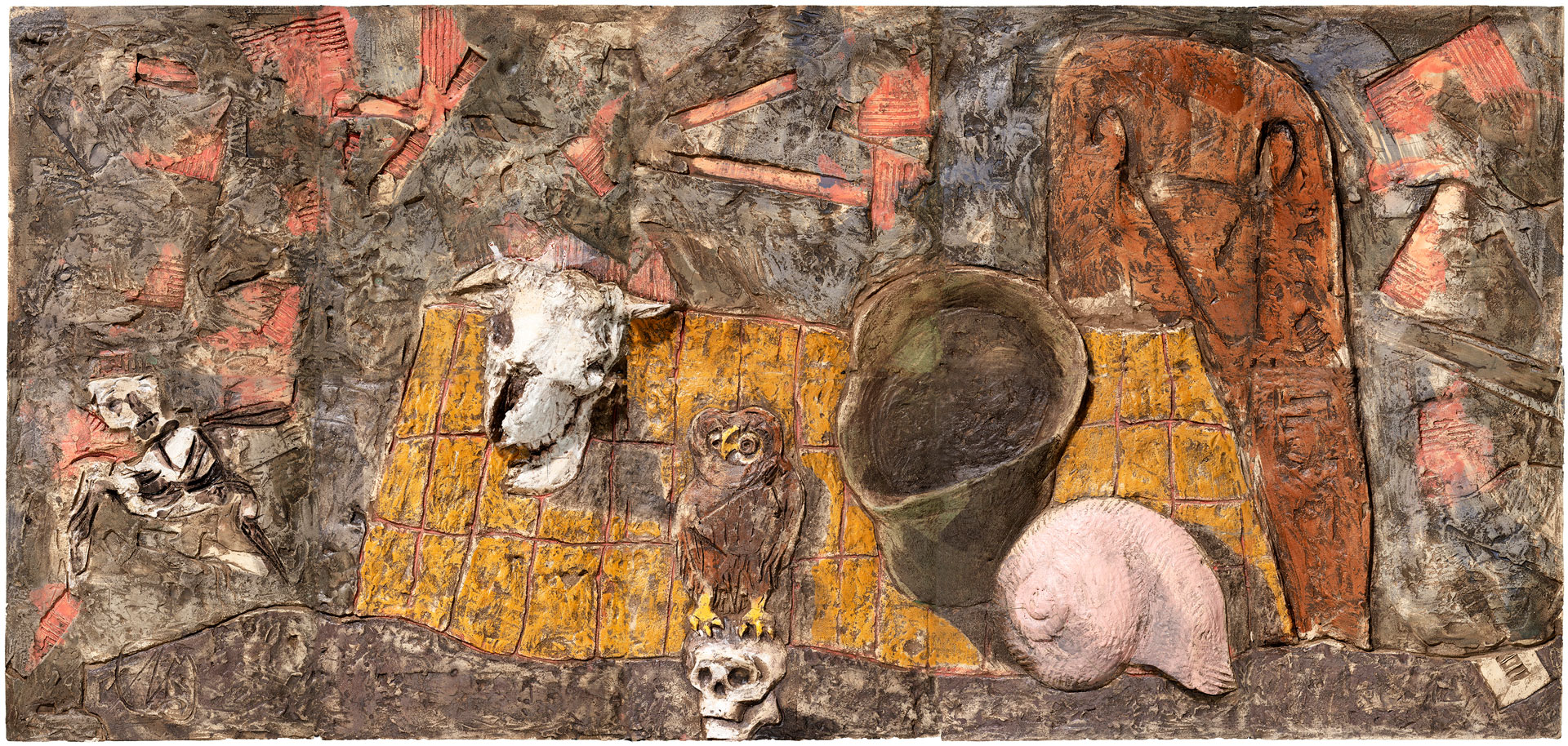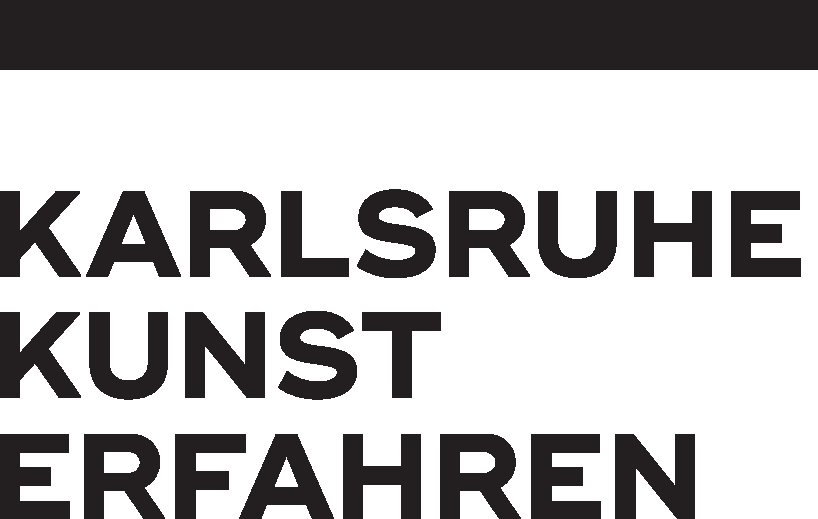GENESIS | Markus Lüpertz
365-Day-Gallery
ETTLINGER TOR – Direction Marktplatz
BELET –ILI

The set table pleases the warrior.
Photography: Atelier Altenkirch, Karlsruhe

The set table pleases the warrior.
Photography: Atelier Altenkirch, Karlsruhe
The two ceramic pictures located at this station correspond conspicuously with the location: the Badisches Staatstheater is located above ground, making it one of the Karlsruhe venues for the performing arts. With the two still lifes in XXL format, Markus Lüpertz also brings in the fine arts and thus deliberately directs the focus to the institution above. At the same time, the ceramics make it clear that Lüpertz sees himself as an artist who always creates works of art with a tradition that goes back centuries or even millennia: We know still lifes already from antiquity, they experienced their heyday in the Baroque era. They were never just for edification, even if the artists used them to show off their skills in differentiating the materiality of the various objects. Around 200 years after the invention of photography, however, Lüpertz can assume that works of art no longer have to reflect reality as faithfully as possible, but that if he brings in a set piece, such as the yellow-orange checkered background in the middle of the picture, the viewer can read it as a tablecloth.
We see a bull’s skull, an inverted steel helmet and a snail’s shell on both ceramics in front of a largely abstract background. They can all be interpreted as symbols for death and are thus a reminder of human transience. In the middle bottom of this ceramic picture, there is additionally an owl sitting on a skull. This bird is often interpreted as a symbol of wisdom, while in earlier centuries the skull was often allegorically linked to medicine – who does not wish for a wise treatment in the case of illness? In his book on the work (Genesis-Trilogy, Vol. 2), Raimund Wünsche also points out that the composition of skull and owl inspired Lüpertz to name this picture originally “Athen Table”, since the animal corresponding to Athena is the owl.
The steel helmet in turn refers to Lüpertz’s examination of German history. He used this motif repeatedly since the 1970s, even if he himself says, “I was never interested in politics, it was always too prosaic for me, it never interested me.” War and early post war times nonetheless had had an impact on his art as he was born in 1941 as seen in the steel helmet. Therefore, this still life might be an examination of his artistic work, which he sets a brilliant climax with the “Genesis” cycle.
“Belet-ili” is the name of a Mesopotamian mother goddess who, as creator of humanity, is equal with the Christian god. It is associated with pregnancy and childbirth – children also mean life after death, which may have led to the choice of this title at the end of an (artist’s) life. This also makes it clear that Markus Lüpertz wants the “Genesis” cycle to be understood more broadly than just being reduced to the first book of Moses in the Bible. Repeatedly he integrates earlier creation myths, such as the Gilgamesh epic, but also Dante’s “Divine Comedy” and pagan folk beliefs are part of the rich repertoire from which he draws.
Text & translation: © Chris Gerbing, 2023
FURTHER INFORMATION
365-DAY-GALLERY
For a first orientation, you will find here an overview of the 365-day-”Genesis” gallery, which can be reached by underground almost 24 hours a day.

ALL STATIONS
ALL STATIONS
